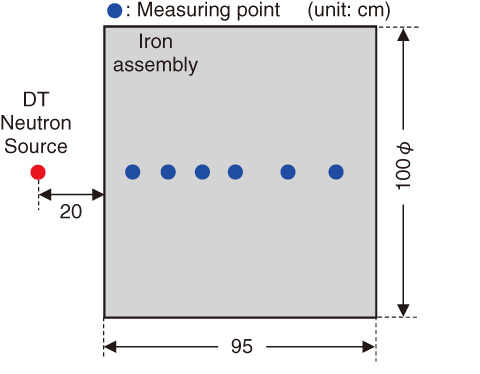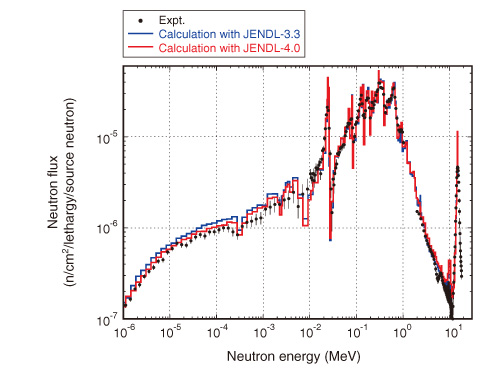
Fig.4-8 Layout sketch of iron experiment (vertical cross section)

Fig.4-9 Neutron energy spectra at depth of 31 cm in iron assembly
Various studies toward the practical use of fusion reactors as a future energy source have been proceeding step by step. Fusion power plants produce 14 MeV neutrons through the reactions of deuterium and tritium in high-temperature plasma. Nuclear reactions of these neutrons with surrounding materials generate thermal energy (nuclear heating) and tritium (tritium production), which is used as fuel in the plants. For safety, the neutrons have to be shielded so that they do not leak outside the fusion power plants (shielding).
The 14 MeV neutrons initiate various nuclear reactions with all the materials surrounding the plasma. Fusion reactor designs estimate the nuclear heating, tritium production, shielding, and so on by considering all the nuclear reactions using a radiation transport code and database (nuclear data library) of nuclear reaction cross sections (nuclear data) to characterize the probability that a nuclear reaction will occur. The typical radiation transport code is the Monte Carlo code MCNP, which is used worldwide because of its few calculation approximations. On the other hand, there are several nuclear data libraries; the Japanese Evaluated Nuclear Data Library (JENDL) in Japan, ENDF/B in the US, and JEFF in Europe. Nuclear data libraries are one of the most important databases that determine the calculation accuracy of fusion reactor design results. It is necessary to examine and improve the accuracy of nuclear data libraries experimentally.
The Fusion Neutronics Source facility in the Japan Atomic Energy Agency (JAEA) can produce the same 14 MeV neutrons as those generated in fusion reactors with an accelerator. We inject these neutrons into various assemblies, as shown in Fig.4-8, and measure the data for neutrons and gammas inside the assemblies. We simulate these experiments with MCNP and the nuclear data libraries and validate the accuracy of the libraries. Fig.4-9 shows a typical example (iron experiment). The calculated neutron spectrum below 0.01 MeV with the previous version, JENDL-3.3, is about 30% larger than the measured one, but the discrepancy between the calculated and measured results decreases to about 15% in the calculation result with the latest version, JENDL-4.0 (some of the cross section data for 57Fe were dramatically modified on the basis of our study).